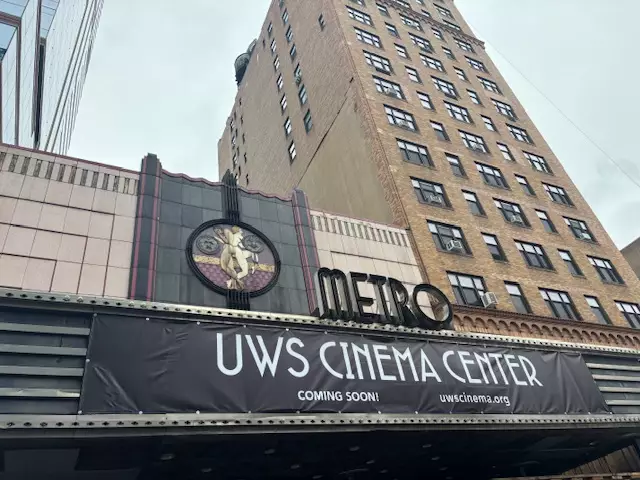As one of the quintessential markers of artistic expression, theaters have long served as heartbeats of their communities. They breathe life into neighborhood culture, offer a platform for diverse voices, and signify the collective imagination of their patrons. However, the disappearance of such venues, particularly in urban environments, is alarming and speaks volumes about the broader cultural malaise affecting cities. The transformation of the old Metro Theater on Broadway into a five-screen arthouse cinema presents a revitalizing force against this disheartening trend. This venture, spearheaded by the newly established Upper West Side Cinema Center, is not just about restoring a building; it signifies a crucial shift toward reclaiming community access to independent and foreign cinema.
A Beacon of Hope in a Cultural Desert
Addressing the needs of a community starved for cinematic creativity, the Upper West Side Cinema Center aims to breathe life back into an area that has long been bereft of independent movie theaters. The Upper West Side is often regarded as a cultural oasis; however, the closure of the Lincoln Plaza Cinema created an alarming vacuum that left many film enthusiasts in a lurch. The resurrection of the Metro Theater emerges as a beacon of hope in this cultural desert, lovingly nurtured by substantial support from private donors and significant grants from the city and state.
Notably, the involvement of filmmakers such as Martin Scorsese and Ethan Hawke adds both credibility and urgency to the restoration project. Their commitment underscores not merely an industry concern, but also an impassioned plea for the preservation of independent cinema, which faces increasing competition from streaming platforms. The backing from these eminent cinematic figures serves as a clarion call for the community and a powerful reminder of the cinematic experiences that await.
The Financial Framework of Comeback
The revitalization project for the Metro Theater is as ambitious as it is necessary, with the Upper West Side Cinema Center having completed the initial $6.9 million purchase. The proposed total restoration costs are estimated to range between $15 million to $22 million—a daunting figure that signals the enormity of the task ahead. However, the financial scaffolding in place is indicative of a community rallying together to reclaim its artistic identity.
Grants from New York State and support from private benefactors exemplify a potent mix of public and private engagement in the arts. Governor Kathy Hochul’s allocation of nearly $4 million, enabled by supportive legislation from Assemblymember Micah Lasher and State Senator Brad Hoylman-Sigal, showcases an acknowledgment at the governmental level of the vital role theaters play in cultural identity and community cohesion.
Beyond Film: A Community Gathering Space
Importantly, the Metro Theater will not merely function as a venue for screening films; it plans to include an education center and a café that invites street-level engagement. This concept reinforces the theater’s role as a community hub, fostering social interaction, dialogue, and the exchange of ideas. In an age when technology often isolates us behind screens, the Metro Theater embodies a commitment to reconnecting people and sparking meaningful conversations.
By cultivating an environment that invites both casual spectators and dedicated cinephiles, the establishment promises to attract a diverse audience. It aspires to be more than just a passive viewing space; it’s envisioned as a vibrant setting where people gather, connect, and broaden their perspectives through the universal language of film.
Cultural Resilience Amidst Urban Decay
The Metro Theater stands as an emblem of resilience amidst urban decay. Its decline over the last twenty years serves as a painful reminder of the fragility of cultural venues in the fast-changing landscape of city life. Film hails from a rich history, one that necessitates communal spaces for discussion, debate, and appreciation. The theater’s closure and subsequent neglect symbolize deeper threats: the erosion of shared experiences that punctuate our cultural tapestry, making the revival all the more urgently necessary.
As the theater transforms from a dormant relic into a flourishing arts venue, it prompts introspection about our cultural responsibilities. Will we continue to let artistic spaces dwindle under the pressure of commercialism? Or will we invest our resources into ensuring future generations can enjoy the diversity of artistic expression?
The Collective Pursuit of Cultural Recovery
As the Upper West Side Cinema Center prepares to kick off the second phase of the project, they are not merely restoring a building; they are igniting a collective pursuit of cultural recovery. The support from the community—visible in donations and the talent backing the project—speaks to a shared belief that art and cinema can triumph over the encroaching isolation of the modern world. With a projected operational timeline of three years, the anticipation brewing around this project serves as a reaffirmation of the vital importance of physical spaces for creative expression and engagement.
The commitment to turning the Metro Theater back into a premier cinematic destination can catalyze broader cultural revitalization in urban settings. By standing up against the status quo, the Upper West Side Cinema Center offers a powerful reminder: that art is essential not just for entertainment, but for community solidarity and cohesion in an increasingly fragmented world.

